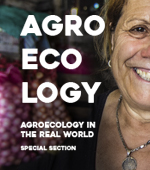
26 January 2011 | News | Extractive industries
Dirty Gold
Mining in Páramo de Santurbán, Colombia
Download: MP3 (1.4 Mb)
In order to produce a 10 gram gold ring, 1 kg of cyanide is used, which is enough to kill 30,000 people. This example helps to understand the environmental damage of open-pit mining, that threatens the Colombian páramo.
This type of ecosystem is characteristic of the Andean region, and is shared by Colombia, Ecuador and Peru. In Central America there are páramos in Costa Rica. They regulate the recharge of aquifers and habitats of native species, which is of great importance for the population living in the mountains and valleys.
In Colombia, the determination of Juan Manuel Santos’ administration to turn the country into a mining center seems to be stronger than laws, since even though there are regulations that prohibit open-pit mining in páramos, the government is considering authorizing a gold project submitted by GreyStar Resources Ltd, from Canada.
If this project is approved, water supply to approximately two million people from Bucaramanga and Cúcuta cities would be at risk, among other impacts. In response to this threat, Colombian organizations have started a campaign to denounce the situation and send letters to environmental authorities.
“Conservation of paramos equals conservation of water, biodiversity and the struggle against the climate crisis”, state organizations from the Colombian Network against Transnational Mining (Reclame)
According to a publication by Mario Alejandro Valencia, member of Reclame, “GreyStar estimates that the recoverable reserves of gold in Santurban amount to 9 million ounces, and of silver amount to 59 million. The company estimated that the fees it would have to pay to the country would be 14.9 million dollars per year, approximately 224 million dollars in 15 years –without taking into account tax exemptions- while the sale of gold and silver would generate profits of 14.2 billion dollars. That is to say, Colombia would be left without paramos, without water and with less than 2 per cent of the gold looted.”
The researcher also makes reference to the resistance to this project and stated that the Committee in Defense of the Santurban Paramo has gathered 50 thousand signatures against it in Bucaramanga city.
There have been several cases at international level where cyanide-based mining has been banned –among them the ban by the European Commission on May 5th- which support the people defending the Santurban Paramo.
“In these mining exploitations situated near mountains forests are cut down and the fertile surface of the ground is destroyed. In addition, they use explosives to break the rock. These rocks are transported to the close valleys, where rivers are buried,” Reclame explains.
And they conclude that stopping the Canadian project would help to stop other similar projects such as La Colosa in Tolima department, Marmato in Caldas and Mande Norte in Choco.
Photo: sistemas-elkhim.blogspot.com







